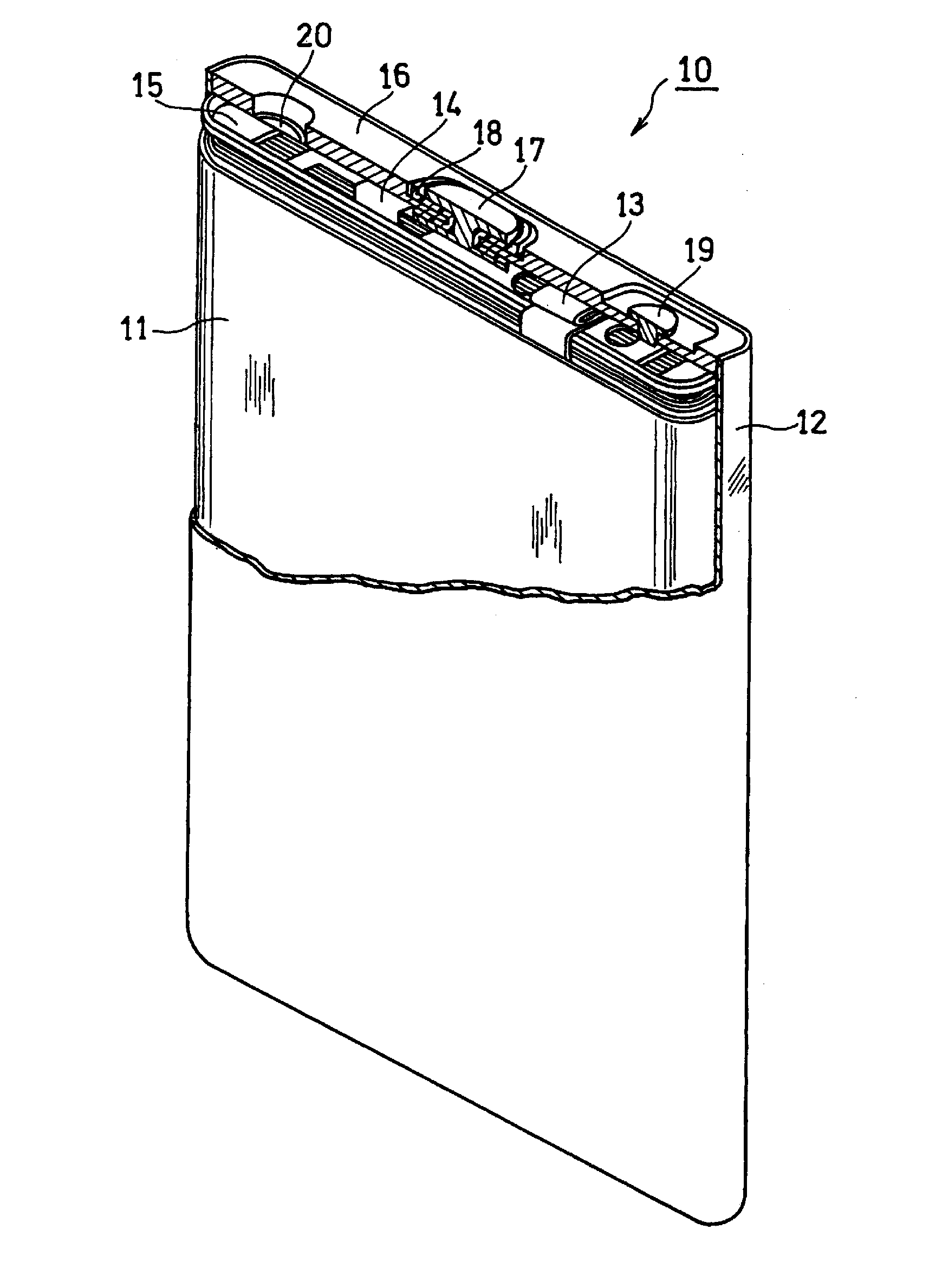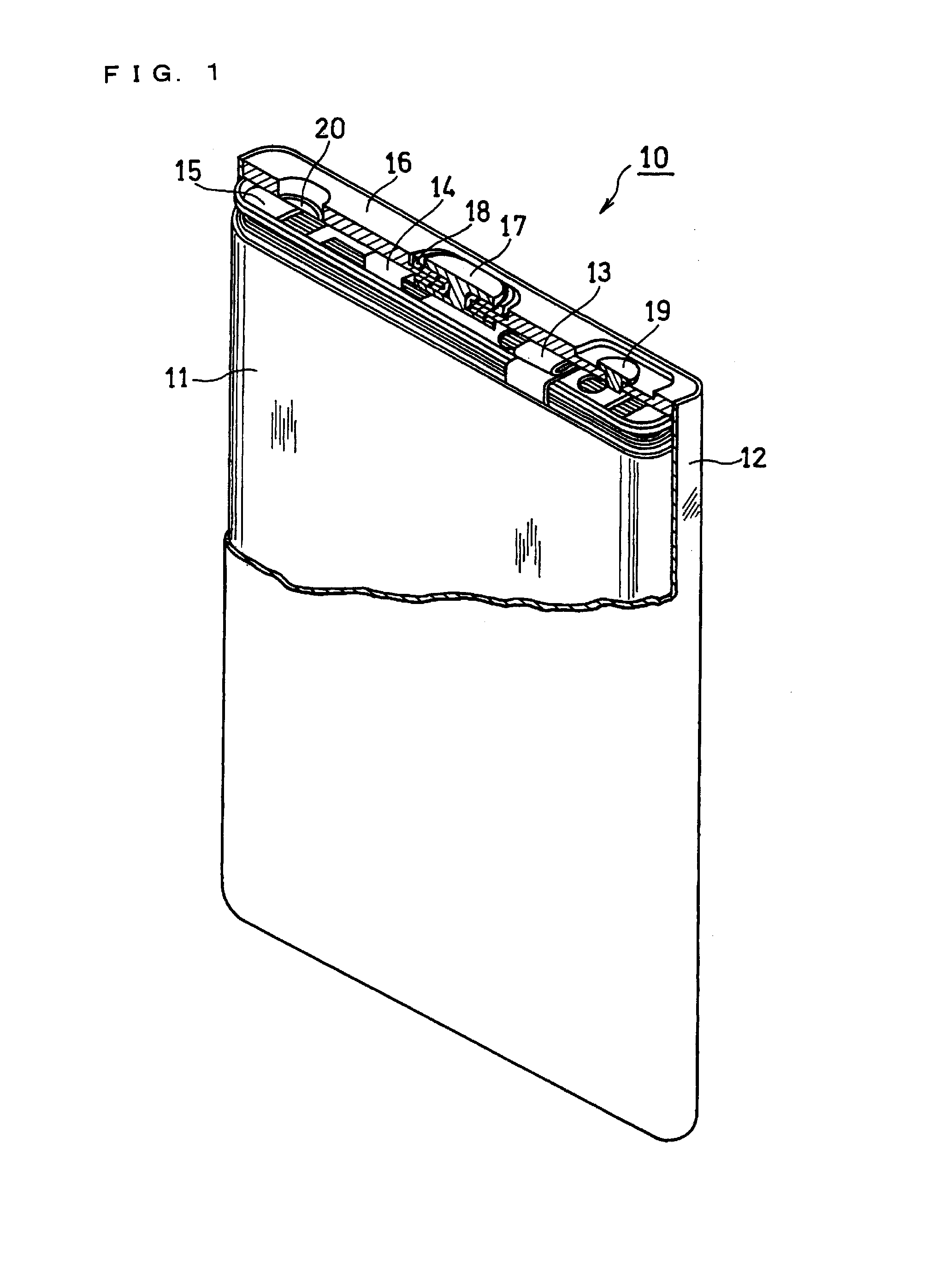Non-aqueous electrolyte secondary battery and method for producing the same
a technology of non-aqueous electrolyte and secondary batteries, which is applied in the direction of cell components, final product manufacturing, sustainable manufacturing/processing, etc., can solve the problems of battery swell, and achieve excellent cycle characteristics, suppress gas generation, and excellent storage characteristics
- Summary
- Abstract
- Description
- Claims
- Application Information
AI Technical Summary
Benefits of technology
Problems solved by technology
Method used
Image
Examples
example 1
[0106]A positive electrode active material (LiNi0.4Mn0.3Co0.3O2), PTFE serving as a binder, acetylene black serving as a conductive material, and CMC serving as a thickener were blended in a mass ratio of 90:4:5:1, and mixed together while water serving as a dispersion medium was being added thereto, to prepare a positive electrode slurry. The positive electrode slurry was applied onto both surfaces of an Al foil (thickness: 15 μm) serving as a current collector, and heated at 120° C. to remove water, followed by pressing with a roll press. The resultant product was cut into a predetermined size, and heated at 250° C. for 16 hours in a dry air (dew point temperature: −30° C.), to obtain a positive electrode. The carbonic acid content and the weight loss in the positive electrode before heating were measured in a manner as described hereinafter. The carbonic acid content was 4500 ppm, and the weight loss was 1000 ppm.
[0107]Next, a negative electrode active material, CMC serving as a ...
example 10
[0111]A positive electrode was produced in the same manner as in Example 1, except that the heating in Example 1 was not performed, and instead, the positive electrode was heated at 300° C. for 16 hours in a dry air, and then left standing for 72 hours in an environment having a dew point of 0° C. and a temperature of 25° C., followed by further heating at 300° C. for 16 hours in a dry air. A battery was produced in the same manner as in Example 1, except for using the obtained positive electrode. The carbonic acid content and the weight loss in the positive electrode before heating were measured in the manner as described hereinafter. The carbonic acid content was 4500 ppm, and the weight loss was 2100 ppm.
example 11
[0112]A non-aqueous electrolyte was prepared in the same manner as in Example 1, except that vinylene carbonate and 1,3-propane sultone were added in an amount of 2% by mass and 1% by mass, respectively, relative to the whole non-aqueous electrolyte. A battery was produced in the same manner as in Example 1, except for using the obtained non-aqueous electrolyte. The carbonic acid content and the weight loss in the positive electrode before heating were measured in the manner as described hereinafter. The carbonic acid content was 4600 ppm, and the weight loss was 2000 ppm.
PUM
| Property | Measurement | Unit |
|---|---|---|
| temperature | aaaaa | aaaaa |
| temperature | aaaaa | aaaaa |
| temperature | aaaaa | aaaaa |
Abstract
Description
Claims
Application Information
 Login to View More
Login to View More - R&D
- Intellectual Property
- Life Sciences
- Materials
- Tech Scout
- Unparalleled Data Quality
- Higher Quality Content
- 60% Fewer Hallucinations
Browse by: Latest US Patents, China's latest patents, Technical Efficacy Thesaurus, Application Domain, Technology Topic, Popular Technical Reports.
© 2025 PatSnap. All rights reserved.Legal|Privacy policy|Modern Slavery Act Transparency Statement|Sitemap|About US| Contact US: help@patsnap.com


